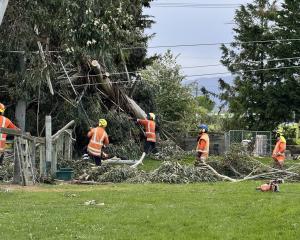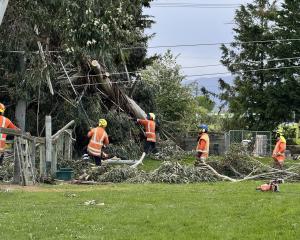A hose failure during a training exercise for Dunedin firefighters could have had serious consequences in an actual fire callout, a colleague says.
A Dunedin firefighter, who wished to remain anonymous because of ongoing industrial action, said concerns about the hoses were flagged during a training exercise where a derelict house in Concord was burned down on May 27.
The firefighter said a crew was practising firefighting in a stairwell but the hose they were using perforated and lost pressure.
A backup was available because it was a training environment, but in a real life scenario the situation would have been extremely high risk, with crews likely to be unable to protect themselves from flames after they had entered a burning structure, the firefighter said.
Other incidents had shown firefighters could receive severe burns when water delivery failed during fire callouts, they said.
Fire and Emergency New Zealand is spending $160,000 to buy 325 lengths of hose to replace the FlashFlood 500 yellow 45mm hoses after firefighters baulked at using the product following a fatal New Plymouth house fire where the hose was punctured, possibly on broken glass.
The Dunedin incident was on the same day as the New Plymouth fire.
Fenz management in Dunedin was "very supportive" of frontline firefighters and had heeded the concerns raised and moved quickly to remove the hoses from all trucks on Monday, two days before a national directive was issued, the firefighter said.
Senior Station Officer and New Zealand Professional Firefighters Union (NZPFU) Dunedin Local secretary Mark Leonard said claims about appropriate uniforms, appliance purchasing and equipment were part of the reason firefighters were taking part in a partial strike.
In the last five years operational firefighters had little input into purchasing decisions.
Consultants from outside the job had come in and had not done due diligence around purchasing, he said.
"I think the yellow hose is a classic example of that."
The NZPFU had first raised concerns about the hose in March, SSO Leonard said.
National manager equipment and logistics Charlie Lott said the hose conformed to international standards and was not defective or unsafe for use.
It was introduced as a lighter weight hose in 2019 and slightly reduced durability was assessed at the time as being an acceptable trade-off for being easier to deploy.
There was now a perception among some firefighters that the hose was not sufficiently robust when compared to other brands of hose and a replacement process was being undertaken.
The hose was removed from first response appliances and firefighters have been directed to use other hoses instead.
There were plans to redistribute the hose to training environments, Mr Lott said.











